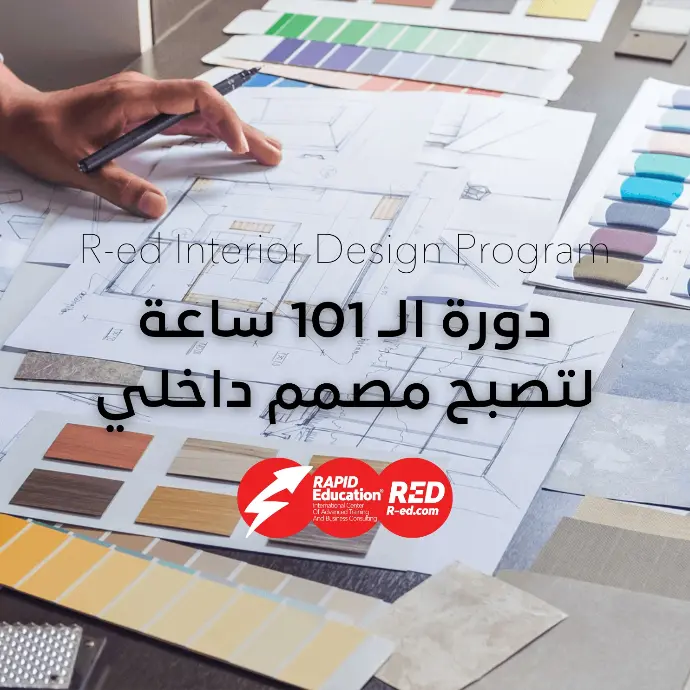
Interior Design Program
Interior Design Program
The program combines creativity, aesthetics, and practical innovation to create comfortable and beautiful environments
It offers an integrated curriculum that includes practical workshops and theoretical courses in design and history, as well as the development of presentation skills and the use of modern resources.
----------------
A professional interior designer is defined as a person who possesses the educational qualifications and practical experience necessary to transform interior spaces into environments that enhance quality of life and productivity, taking into account the health, safety and well-being of users.
------------------------
Tasks and functions of an interior designer
Analysis of needs: An interior designer begins by studying and analyzing the client's requirements and goals, as well as the safety standards necessary for living and working
Integrate knowledge and design: The designer utilizes their experience and knowledge of interior design to create solutions that combine aesthetics and functionality, while adhering to established standards and norms
Creating concepts: Formulates initial design ideas that reflect the practicality and aesthetics of the space, in harmony with the user's needs.
Developing recommendations: Presents integrated design solutions through 2D and 3D drawings, helping the client visualize the end result
Prepare drawings and specifications: Prepares detailed blueprints for the work, including ceiling drawings, lighting, interior details, selection of materials and finishes, space planning, furnishings, fixtures and equipment, taking into account international guidelines and technical codes
Professional cooperation: Collaborates with licensed experts and engineers in various technical fields to ensure that the design complies with regulatory requirementsMonitoring and evaluation: Oversees implementation and evaluates design solutions during and after implementation to ensure desired outcomes are achieved.
Interior Design Training Program
R-ed Rapid Education Interior Design
Introduction to Interior Design
Historical overview: The evolution of interior design through the ages and the influence of different cultures
Fundamentals of design: Balance, proportion, rhythm, rhythm, contrast, harmony, and other basic principles
Analyzing customer needs: Understanding customer requirements, examining recent trends in interior design
Exploring different styles: From classic to modern, and how to combine different elements to create harmonious designs
Color theory and materials
Colors and harmony: How to choose the right colors and their effect on the environment and mood
Materials and textures: Exploring the types of materials used in design (wood, glass, metal, fabric, stone, etc.) and their effect on ambience and function.
Textures and combinations: Combining colors and materials to create balanced sensory and aesthetic effects
Interior lighting
Basics of lighting: The difference between general, functional, and mood lighting and how to use it strategically
Lighting design: Developing lighting plans that suit different types of spaces and enhance their functionality
Lighting types and technologies: Comparison of LED, halogen, fluorescent, and indirect lighting
Using shadows and gradients Creating dramatic or soft effects using light intensity and direction
Modern trends: Sustainable lighting, smart lighting, and combining natural and artificial lighting
Fundamentals of Electricity and Technology (CET)
Electrical layout: How to distribute electrical outlets and circuits to suit the needs of the design.
Safety standards: Ensuring electrical systems comply with regulations and standards.
Incorporating new technologies: Intelligent control of lighting and appliances, security and comfort systems.
Water Supply (AEP): Designing the distribution of water points in kitchens and bathrooms according to practical and aesthetic standards.
Decoration, furniture, and space planning
Furniture selection: Balancing aesthetics and functionality when designing spaces.
Accessories and finishes: Choosing carpets, curtains, lighting fixtures, paintings, etc.
Creating harmonious environments: Coordinating different colors, materials, and pieces to create a harmonious and functional environment.
Drawing and design techniques
Hand drawing and sketching: Fundamentals of technical drawing and preliminary space planning.
Computer Aided Design (CAD): Using programs such as AutoCAD and SketchUp to create professional models.
Presentations: Creating mood boards and design sketches to clearly present ideas to clients.
Final Project
Implementation of a practical project: Apply the skills learned in a real or fictional project that reflects
designer's creativity
Present the project to a panel of judges: Presenting the idea, analyzing design options and demonstrating the ability to implement creative solutions
Organize a professional portfolio: Collect the completed works and projects in an integrated portfolio that makes it easier for the designer to showcase his/her expertise and artistic level when applying for jobs or projects
| المسؤول | Administrator |
|---|---|
| آخر تحديث | 19 مايو, 2025 |
| الأعضاء | 1 |
مشاركة هذه الدورة
مشاركة الرابط
المشاركة على مواقع التواصل الاجتماعي
المشاركة عن طريق البريد الإلكتروني
رجاءً تسجيل الدخول لمشاركة هذا Interior Design Program عن طريق البريد الإلكتروني.